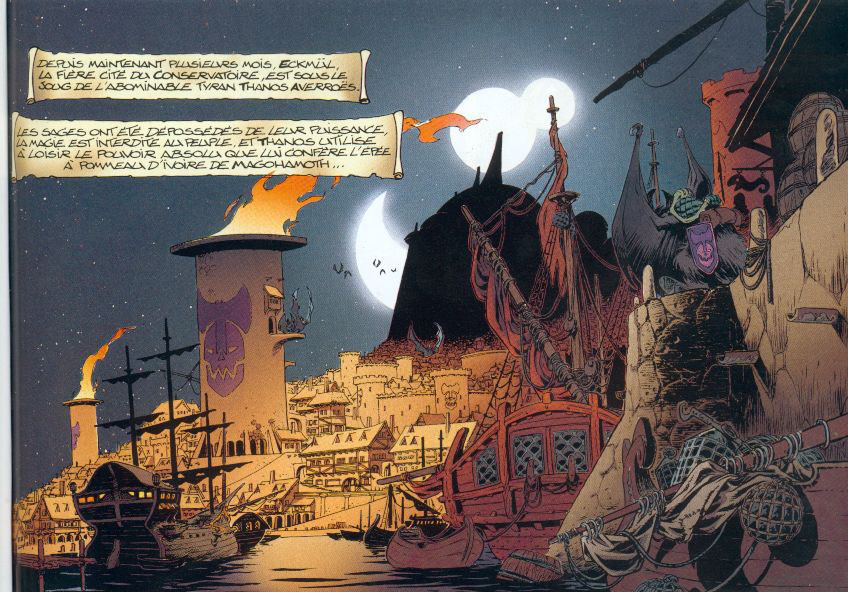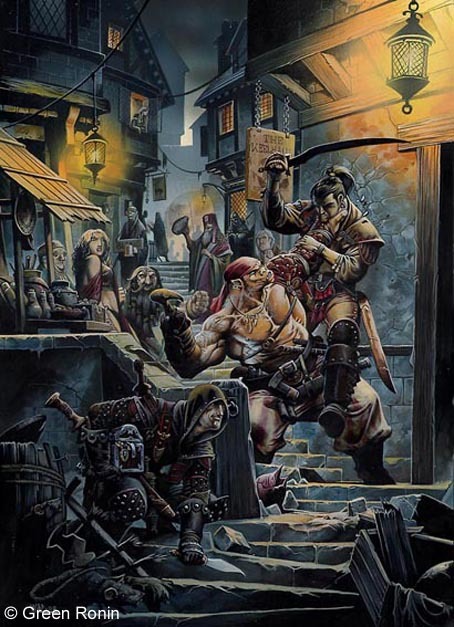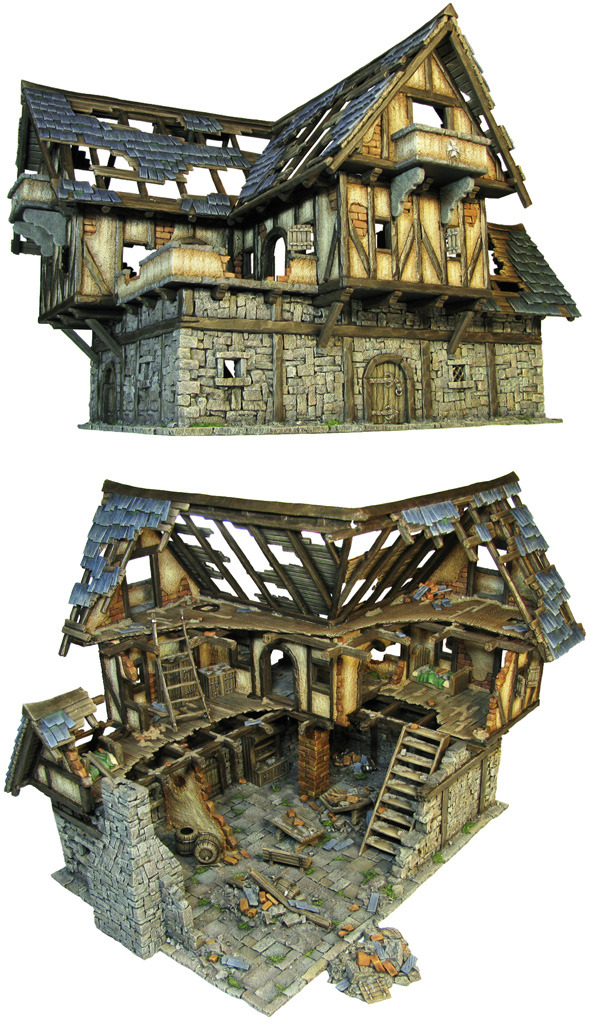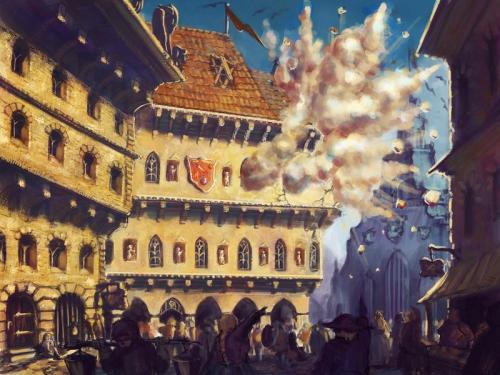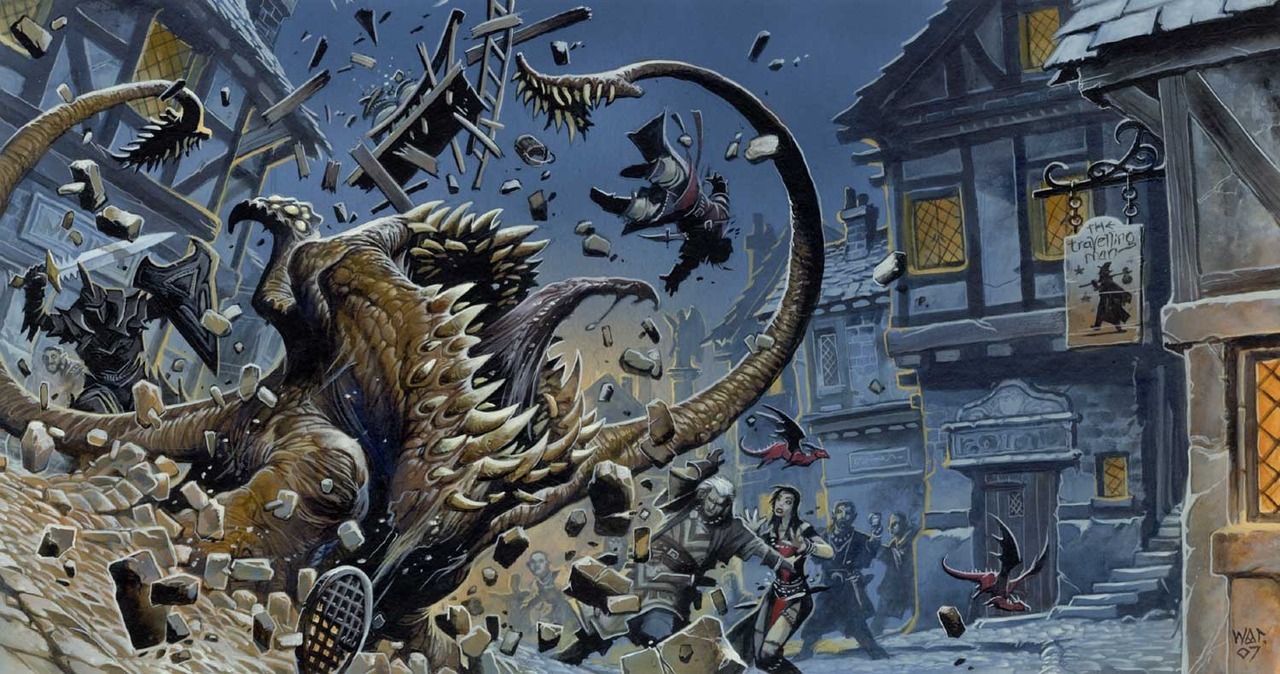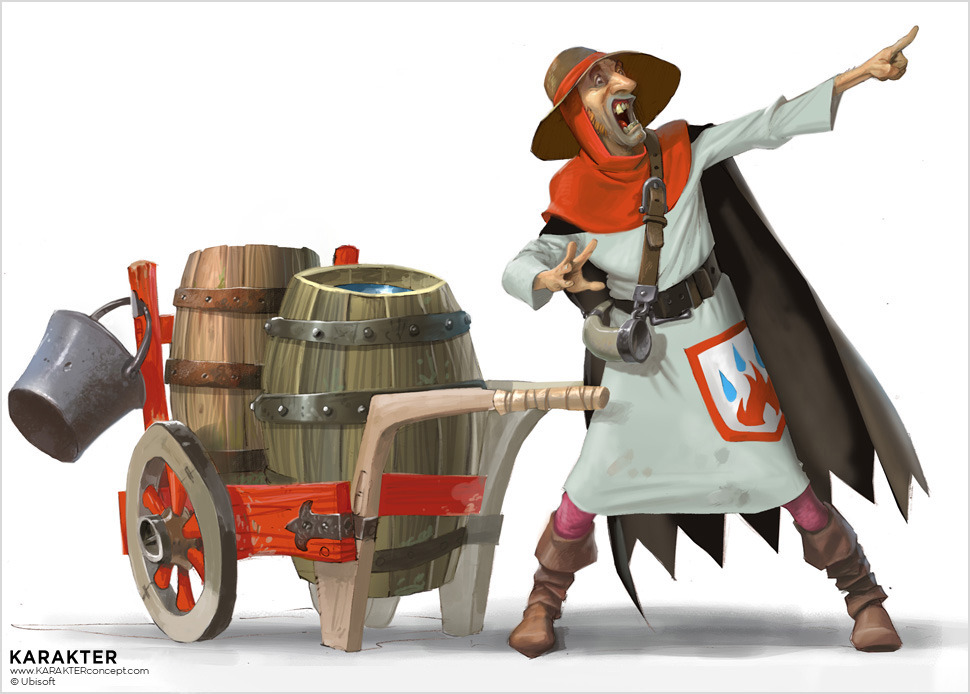Despite all its horrors, the City is a baroque, impossible, wonderous place. Few will choose to leave it willingly; fewer still will fail to return. Choose (1d20) one, two, or three phantasmagorical traits that set the City apart from any other metropolises that have been or will ever be:
- ...it floats in the interdimensional space between the planar spheres.
- ...it consumes other cities, leaving only ruins behind.
- ...it walks across the face of the world, hauling its bulk on thousands of legs.
- ...it grows from the corpse of a dead god.
- ...it was built on the back of an immense beast.
- ...it fell from the heavens.
- ...it stands upon the border of Hell itself.
- ...it lurks within an immense dark cavern, beneath the surface of the world.
- ...it towers miles into the sky.
- ...it is an animate, living thing, with a mind of its own.
- ...it rules a vast empire built on blood and iron.
- ...it never stops raining here.
- ...it lies beyond the reach of sleep and dreams.
- ...it is filled with a thousand portals to a hundred worlds.
- ...it lies deep beneath the sea.
- ...it was built from the dreams of a lone madman.
- ...the walls between the realms of life and death are thinner here.
- ...the streets constantly shift and move, like a living labyrinth.
- ...the world has already ended, and the City is all that is left.
- ...it wraps back in upon itself like an ouroboros.
The City plays home to a host of cultures and species, a melting pot that boils everything down to its lowest common denominator. Humans call the City home, of course, but many other races do as well. Perhaps they form part of the ruling classes, perhaps they are victims of a speciest government that treats them like slaves, or perhaps they are just people. Pick (1d20) at least three non-human sapient races that make up large portions of the city's population:
- Orcs, hot-tempered, thick-skinned, and often cruel.
- Scarabae, beetle-kin with a taste for precious jewels.
- Yuan-ti, descendants of men and snakes with a poisonous bite.
- Fomorians. hulking giants with the blood of the unseelie.
- Abeil, hard-working bee folk from a distant plane of existence.
- Litorians, powerfully built leonine people with a nomadic past.
- Kobolds, scavengers with the blood of dragons in their veins.
- Minotaurs, bull-headed, stubborn, and with a penchant for labyrinths.
- Myconids, fungoid creatures who cannot form human words.
- Aranea, shape-shifting great spiders with a talent for textiles.
- Salamanders, flame-blooded and serpentine.
- Lycanthropes of several different breeds.
- Ghouls, undead scavengers with a savage hunger for flesh.
- Anubians, jackal-headed stone constructs given life through arcane means.
- Wyrmen, pigeon-like flying creatures with a rudimentary intelligence.
- Tritons, fish-kin who live in brackish coves beneath the city.
- Drow, long-banished elf-kin who abhor sunlight.
- Tieflings, humans touched with the blood of the infernal planes.
- Yoon-Suin, slug-kin, immense strength tempered only by their slowness.
- Choose any other race from your favourite compendium of creatures.
Corrupt plutocrats and patricians form the majority of the city's ruling class, but they do not rule alone. There are many interlocking gears in the machinery of oppression. Choose (1d10) two or three other major power groups who hold great influence over the City's leadership, either openly or in secret:
- A nest of vampires (desire: to feast off the life-force of the populace)
- The corrupt elders of a major faith (desire: to rule the hearts and minds of the populace)
- A coven of dream-witches (desire: to rule the world of dreams)
- A cabal of wizards and sorcerers (desire: to plumb the depths of knowledge)
- A cult of hedonistic demon-worshippers (desire: to revel in causing suffering)
- A powerful spirit of law (desire: to ensure obedience and conformity)
- The military leadership (desire: to wage war)
- A prominent devil with a quota to meet (desire: to ensure a healthy supply of damned souls)
- A major criminal syndicate (desire: to accumulate and hold power)
- A truly ancient dragon (desire: to hoard wealth)
Life in the City, for most of its impoverished inhabitants, is a dire struggle for one's daily bread, caught in a constant cycle of debt and near-starvation, living from one day's wage to the next, surrounded by suffering, disease, and crime. The City, however, is not content with the relatively mundane horrors of permanent crushing poverty, inescapable debts, and class-based oppression. Choose (1d12) two or three bizarre inhumanities that are imposed upon the population by the status quo:
- Constant thirst: The supply of drinkable water is controlled by plutocrats, who charge through the nose for the basic substance of life. Vast swathes of the population are constantly on the verge of death from thirst, while the wealthy cavort in bath-houses and fountains.
- Forced undeath: Necromantic rituals are used to transform corpses of the proletariat into a tireless zombie workforce. Often, labourers are worth more as dead corpses than living beings, and the truly impoverished can be forced to sell themselves into undeath to provide for their families.
- Flesh-warping: Those convicted of a crime, or who fall into bankruptcy, become the property of the City. They are subjected to flesh-warping sorcery by the City's justice system, either to shape them into better slaves, or to provide ironic punishments for their crimes. Worse yet the gardens of the truly wealthy are filled with living sculptures; sapient beings sculpted into obscene abstract bodily forms.
- Industrial sacrifice: Ritualised murder powers the City's industrial district. Criminals and debtors are the first to be fed into the maw of progress, but its hunger never yields. Sometimes, entire city blocks are cordoned off, the inhabitants carted away to be fed into some horrific eldritch machines.
- Arcane experiments: Impoverished citizens have no rights when it comes to the pursuit of arcane science. The poor are regularly subjected to horrific experiments, and most diseases that sweep through the tenements are engineered by pestilence mages from the City's most prestigious magical academy.
- Travel restrictions: Peaceful transit through the city is regulated by a series of obscure codes and travel zones. Certain classes of citizen are prohibited from travelling through certain zones at certain times, and anyone found in the wrong district at the wrong time is subject to the full horrific force of the City's justice.
- Body-theft: The wealthiest amongst the elite of the City can live forever by buying up the bodies of young criminals and debtors. Either consciousness can be transferred across bodies, leaving the poor in the broken near-corpses of City elders while they cavort in young and shapely forms, or the City's elite are in fact mental parasites that subdue the consciousness of their hosts.
- Endless conscription: The City's leaders are engaged in a constant and unyielding struggle with a foreign power, and their war machine cries out for fresh blood. Those who are conscripted and remade into soldiers or worse will never return, or at least not in any form recognizable to those who once knew them.
- Dream control: Even in deepest sleep, oppression cannot be escaped. The shadowy guardians of the City walk through the dreams of the sleepers, searching for hints of rebellion and seditious thoughts. Sleepers can even be forced to work off their debts in dream-labours towards mysterious ends.
- Memory markets: In the City, debts can be absolved and crimes forgotten in exchange for your memories, which can be sold on the open market to the highest bidder. It's not unknown for a pauper to sell the memory of their dead mother to pay for a cup of coffee, or the memory of a lost love to pay the month's rent.
- Drug-induced prayer: The alchemists and priests of the City have discovered how to produce an addictive drug known as Faith, which induces a state of heightened religious ecstasy. The prayers of a million addicted labourers are channelled as raw power into the temple-factories and eldritch workshops of the City's industrial districts.
- Blood money: The economy of the City is quite literally built on the blood of its citizenry. Pints of blood are a common unit of exchange to be bought and sold like milk or honey. Taxes, rents, and debts can be forgiven in exchange for a few minutes with a needle and bottle. In the poorer districts, pallid skin and fainting labourers are everywhere, drained of their very life-force by the machine.
Not everyone is content to allow the elites free reign, to simply lie still while they are crushed beneath the gears of capital. The City's underground is awash with revolutionary groups who aim to break the status quo, or defend the rights of the proletariat. The list below includes some of the possible groups that might make up this underground. Choose (d6) at least one revolutionary group that is actively being crushed by the enforcers of the status quo, and at least one revolutionary group whose leadership have abandoned their goals and become co-opted into the regime:
- A powerful trade union (desire: to win rights for workers).
- Anarchist street gangs (desire: to bring down the state).
- Radical street journalists (desire: to expose the truth).
- Liberation theologists, declared as heretics (desire: to protect the impoverished).
- Civil rights activists (desire: to win equality).
- Artistic revolutionaries (desire: to display the truth through art).
The leaders of the City do not generally dirty themselves with the messy business of enforcing oppressive laws and controlling the people. Stamping boots across the face of the citizenry is left to militiamen, secret police, and mercenaries hired by industrial cabals and underworld syndicates. These enforcers are well versed in the language of fists, batons, and torture, but they wield other tools as well. Choose (d10) at least two strengths of the City's enforcers:
- Ironwatch: Street-level enforcers are automata and constructs, immune to bribery and firmly under the control of the central commanders.
- Changelings: The secret police employ changelings who can take any form and infiltrate any organisation.
- Enforcer beasts: Horrific beasts are kept under control by the city guard, to be released upon criminals and rioting citizens at will.
- Noxious alchemy: The city guards have access to an array of alchemical weapons, from noxious choking gasses, to alchemical potions of strength and endurance, to batons marked with poisons that cause vomiting on contact.
- Compulsion: Secret police and other enforcers have access to charms and techniques that inflict magical compulsions upon their targets, mentally compelling them into certain actions.
- Mind flaying: With time and intimacy, agents of the regime can peel away a person's most secret thoughts and memories. The health of the prisoner is not guaranteed.
- Informants everywhere: The secret police use wealth and blackmail to maintain an incredible network of informants and double-agents, giving them eyes at every level of society.
- Judicators: The City's militia is not restrained by any formal system of justice when dealing with the proletariat; agents of the state are free to pass sentence upon offenders in situ.
- Panopticon: Most every public space, and many private ones, are laced with the scrying eyes of the secret police.
- Scent trackers: Once a target has been sighted, members of the militia are able to track them by scent through miles of winding City streets.
Finally, give the City a name, or as many names as its citizens have tongues. Haunting names that harken to lost ideals, musty names that recall ancient history, ironic names that promise a better future, or names that stir memories of revolutions past.
Next up: Mapping the City!
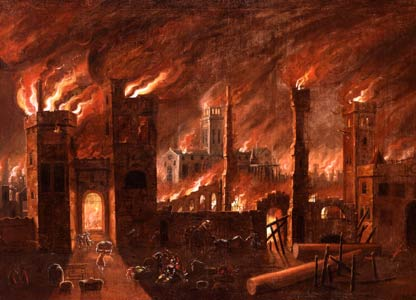

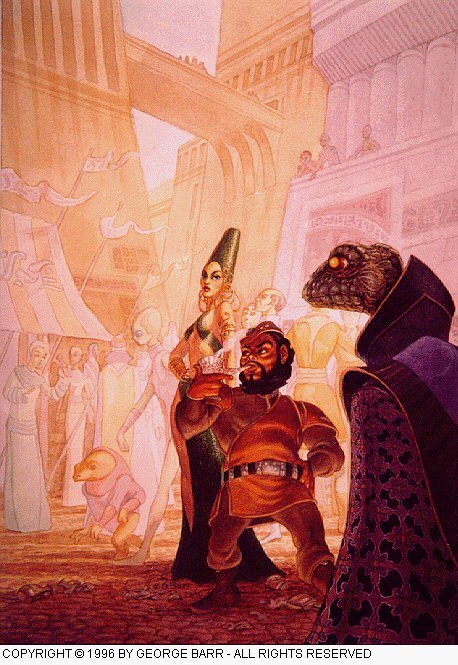
.jpg)





